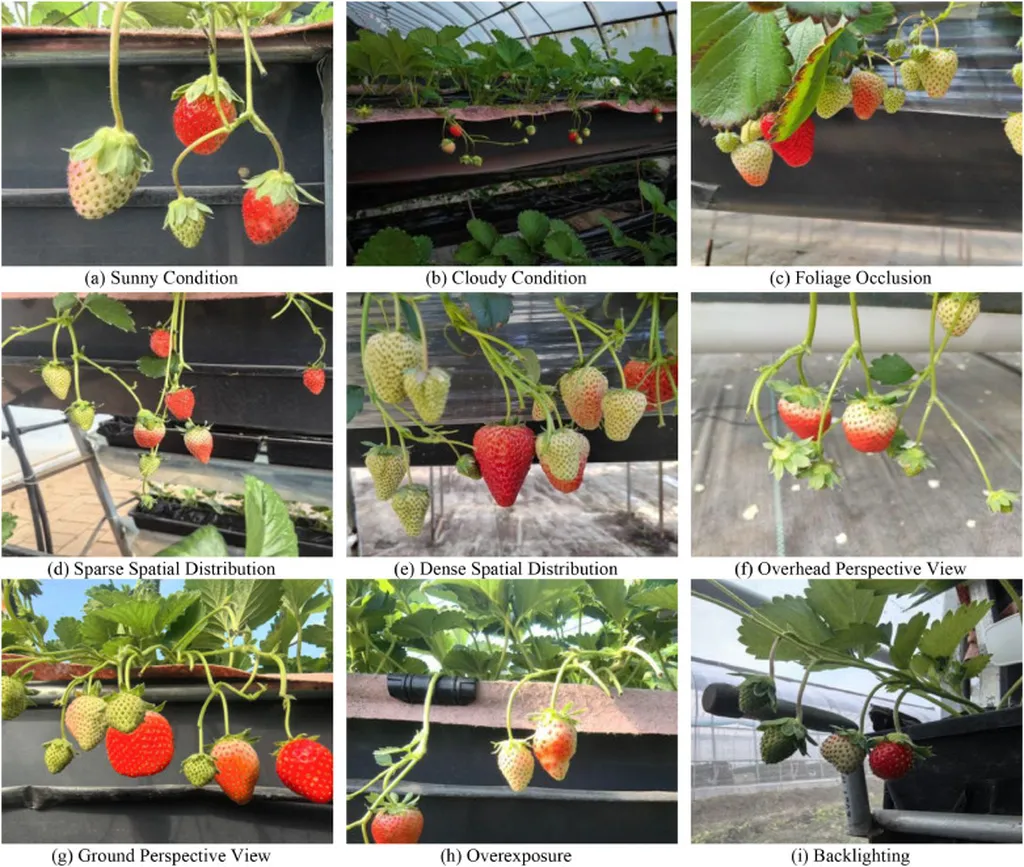In the ever-evolving landscape of precision agriculture, a groundbreaking study has emerged, promising to revolutionize strawberry cultivation and harvesting. Published in the journal *Smart Agricultural Technology*, the research introduces an innovative framework for strawberry maturity detection, addressing critical challenges faced by modern farmers.
Strawberries, with their delicate nature and short postharvest life, have long posed significant hurdles in the realm of automated harvesting. The complex environments of high-rise greenhouses, filled with sensors and irrigation systems, often lead to occlusion and reflective interference, complicating the detection process. Moreover, existing models lack the causal interpretability necessary for reliable decision-making.
Enter the B2G-YOLO11-S model, a sophisticated integration of advanced technologies designed to overcome these obstacles. Developed by a team led by Qian Zhao from the School of Software at Shanxi Agricultural University, this model combines a dual-stream B2-Net backbone, an efficient HGNetv2-C feature extraction module, and a novel causal analysis metric known as the Average Causal Effect (ACE).
The model’s performance is nothing short of impressive. With a mean Average Precision (mAP) of 82.9% at an Intersection over Union (IoU) threshold ranging from 50% to 95%, and a remarkable 95.6% mAP at 50% IoU, it outperforms existing benchmarks. Its precision and recall rates of 89.6% and 92.2%, respectively, underscore its robustness and reliability in real-world scenarios.
One of the most notable aspects of this research is its ability to fuse multi-source image data, both aerial and ground-based, to provide a comprehensive and dynamic evaluation of strawberry maturity. This breakthrough addresses the limitations of single-view data, offering a more holistic approach to maturity detection.
“The integration of causal analysis into our model allows us to understand not just what the model is detecting, but why it is making those decisions,” explains lead author Qian Zhao. “This level of interpretability is crucial for gaining the trust of farmers and ensuring the widespread adoption of our technology.”
The commercial implications of this research are substantial. By enabling more accurate and efficient strawberry maturity detection, the B2G-YOLO11-S model can significantly reduce labor costs and improve harvesting operations. This, in turn, can lead to better quality produce, reduced waste, and increased profitability for farmers.
Moreover, the model’s strong adaptability in complex scenarios makes it a versatile tool for various agricultural settings. Its ability to maintain stability under light intensity perturbations, with an average absolute percentage change in ACE strictly controlled within ±0.5%Δ, sets it apart from other models like YOLOv8 and YOLO11.
As the agriculture sector continues to embrace technological advancements, research like this paves the way for smarter, more efficient farming practices. The integration of causal analysis and multi-source image fusion in the B2G-YOLO11-S model represents a significant step forward in the field of precision agriculture, offering a glimpse into the future of automated harvesting.
With its impressive performance metrics and practical applications, this innovative framework is poised to make a lasting impact on the agriculture industry, ultimately benefiting both farmers and consumers alike.

